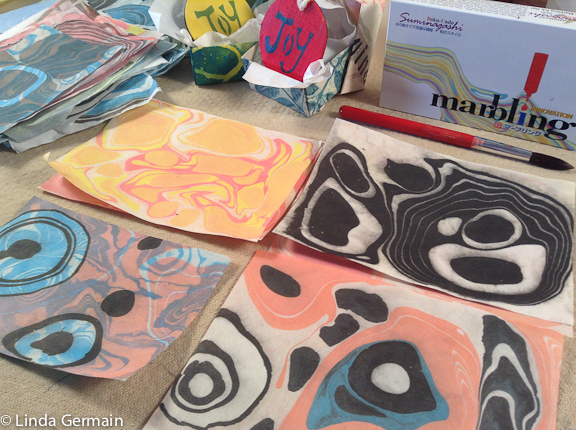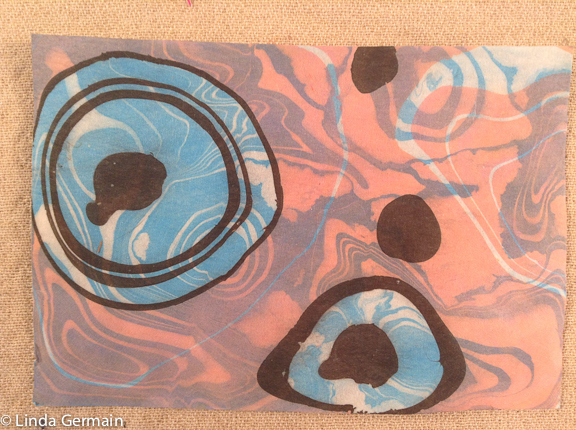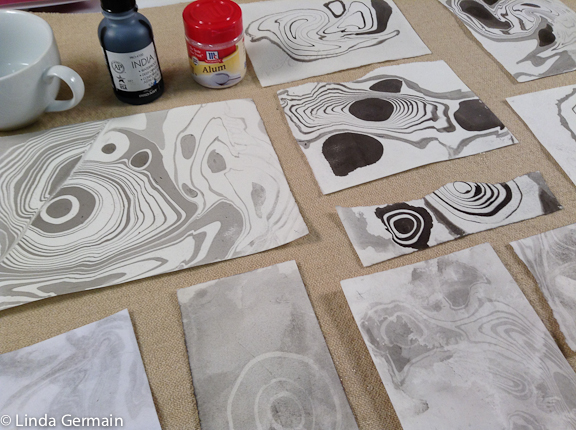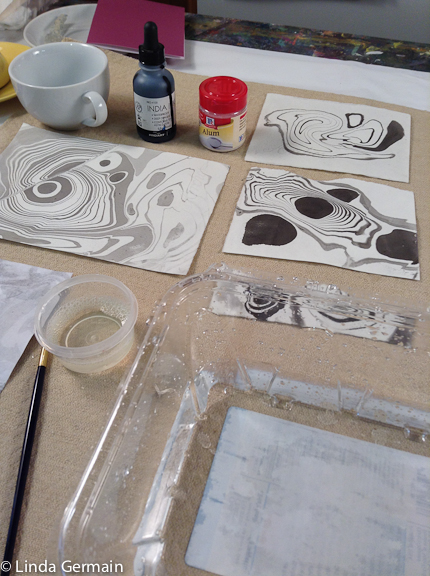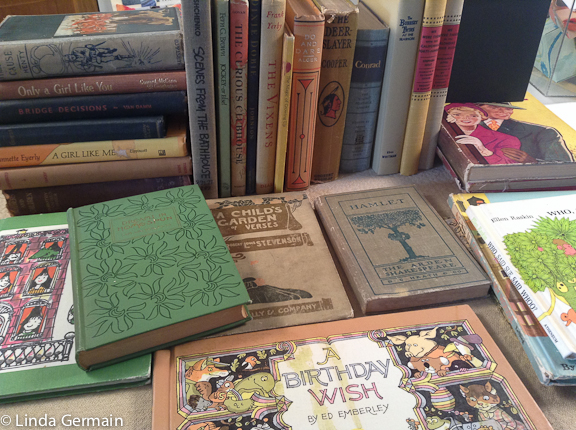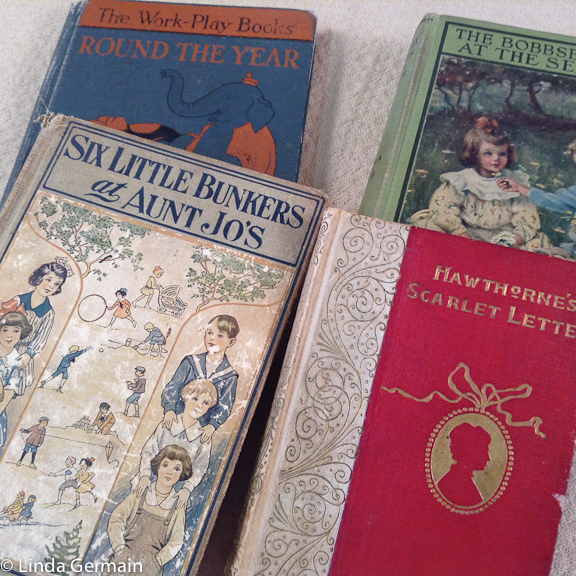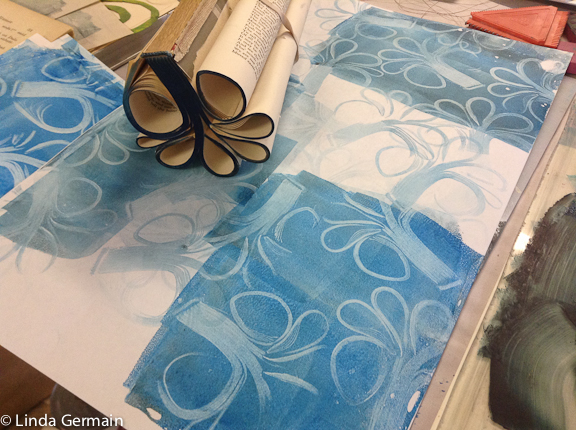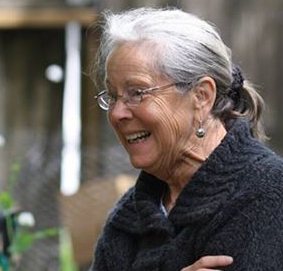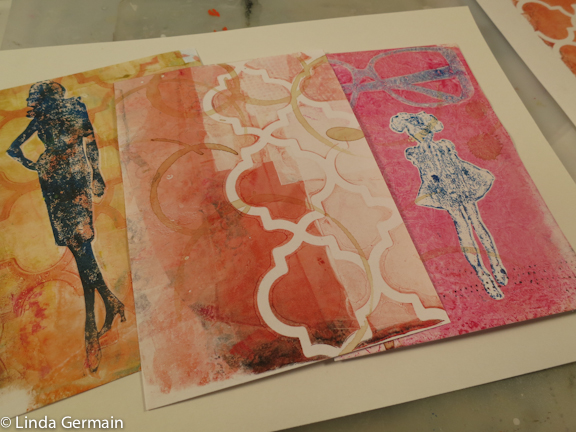Printing unique paper for printing projects
I love experimenting with printmaking processes. I don’t always know how I will end up using the printed papers that I make.
I tried a variety of marbling products, the Suminigashi kit, alum coated paper with waterproof india ink and thin watery acrylics on a liquid starch bath.
I found that the type of paper is very important. The best results were on rice paper and mulberry paper. Most of my other papers gave a faint impression or did not absorb the inks.
I did so many papers that I figured out a few things:
- I like a simpler modern style of marks
- Do 2 or 3 colors max
- Use a big juicy water color brush
- It holds and therefore can release more ink
- Get clean water often
- Skim of the top
- Let the water get very still
- Use very diluted detergent as a dispersant
Some of my goals were to use the papers that I already have in the studio, get a richly pigmented impression and to learn what I like. So for me it is rice paper, the suminagshi kit and a big pointed water color brush. I worked small 5 x 7 and used a foam tray as my container.
Printing unique paper for printing projects Read More »
